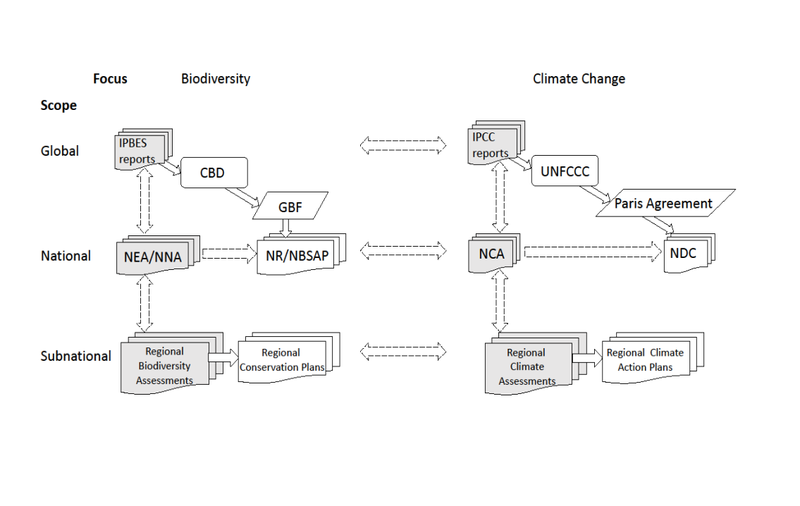

Comprehensive biodiversity assessments play an essential role in strengthening global and national conservation strategies. The recently announced first US National Nature Assessment provides a unparalleled opportunity to comprehensively review status and trends of biodiversity at all levels; this broad context can then help coordinate actions to conserve individual species and ecosystems. The scientific assessments informing the Global Biodiversity Framework adopted at the 2022 Convention on Biological Diversity (CBD) conference of parties provide models for synthesizing information on trends at multiple levels of biodiversity, including decline in abundance and distribution of species, loss of populations and genetic diversity, and degradation and loss of ecosystems and their services, along with data on drivers of biodiversity loss and pathways to their mitigation. The US national assessment can augment such global analyses and avoid the pitfalls encountered by previous US efforts by ensuring policy-relevant design, data accessibility, and inclusivity in both process and product, and by incorporating spatial data relevant to both national and subnational audiences. Although the US is not formally a CBD party, an effective NNA should take full advantage of the global context by including targets and indicators adopted at the 2022 meeting and incorporating an independent review mechanism that supports periodic stocktaking and ratcheting up of ambition in response to any identified shortfalls in stemming biodiversity loss. The challenges to design of an effective US assessment are also relevant globally as nations develop assessments and reporting to support the post-2020 global biodiversity targets. By considering and incorporating the diverse ways in which society values and benefits from nature, such assessments can help bridge the gap between research and conservation practice and communicate the extent of the biodiversity crisis to the public, fostering broad-based support for transformative change in humanity’s relationship to the natural world.